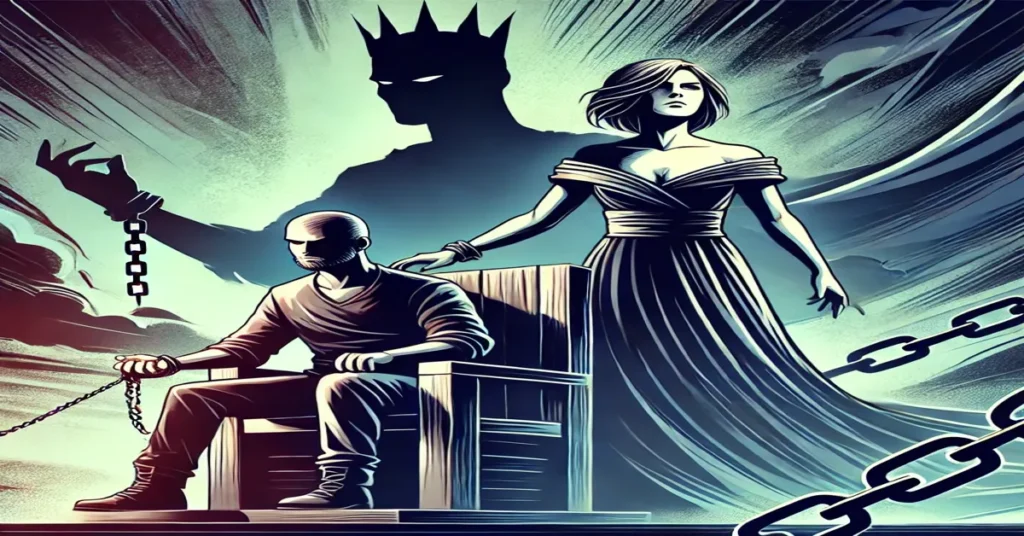In the world of fiction, especially in books, movies, and television shows, villains often take center stage as the primary antagonists to the hero’s journey. They are the forces of opposition, the ones who challenge the protagonist’s ideals and provide tension to the narrative. However, an often-overlooked character in these stories is the villain’s assistant or right-hand person. Whether it’s an evil henchman, a loyal aide, or an underling with their own hidden motives, the assistant to the villain plays a crucial role in shaping the course of the story.
But what motivates someone to work for the villain? What does this relationship reveal about loyalty, power, and morality? In this article, we’ll explore the role of the assistant to the villain in various forms of storytelling, examine the dynamics between these characters and their villainous leaders, and delve into what this relationship tells us about human nature and ambition – Assistant to the Villain.
1. The Archetype of the Villain’s Assistant
1.1 Origins of the Villain’s Assistant in Literature
The concept of the villain’s assistant dates back centuries, appearing in classical literature and mythology. From Shakespeare’s Iago in Othello—a character who acts as both an assistant and antagonist—to the anonymous henchmen in Gothic literature, assistants to villains have always been a staple of storytelling. These characters often serve as extensions of the villain’s power, executing plans, gathering information, or acting as a secondary antagonist to the hero – Assistant to the Villain.
In many cases, the assistant serves to highlight the villain’s traits, whether through blind loyalty, shared ambition, or even occasional reluctance. This archetype plays a crucial role in enhancing the villain’s status as a formidable force while simultaneously offering a secondary layer of intrigue to the story – Assistant to the Villain.
1.2 Key Traits of the Villain’s Assistant
The villain’s assistant is often characterized by several key traits, including – Assistant to the Villain:
- Loyalty: This is one of the most defining characteristics of a villain’s assistant. Whether their loyalty stems from fear, admiration, or a shared vision of power, these characters are steadfast in their support of the villain.
- Ambition: Many assistants to villains are driven by their own ambitions. Some seek to gain power or wealth through their association with the villain, while others may have personal reasons for aligning themselves with an evil force.
- Cunning: Villains often surround themselves with individuals who possess a sharp intellect or specialized skills. The assistant frequently acts as the strategist, researcher, or the one who executes the villain’s plans with precision.
- Moral Ambiguity: The assistant to the villain usually occupies a morally grey area. They are not always completely evil themselves, but their willingness to support the villain’s agenda suggests a flexible moral compass.
2. Famous Villain-Assistant Duos
Many stories across different genres showcase memorable relationships between villains and their assistants. These duos often add depth to the narrative and offer a unique look at the dynamics of power and loyalty – Assistant to the Villain.
2.1 Darth Vader and The Emperor (Star Wars)
One of the most iconic villain-assistant duos in popular culture, Darth Vader serves as the enforcer of Emperor Palpatine’s dark agenda in the Star Wars saga. While Darth Vader is himself a menacing force, his loyalty to the Emperor—at least initially—is based on his own fall from grace and the promise of power. Their relationship is a powerful depiction of how ambition, manipulation, and loyalty to a darker cause can drive someone to commit acts of evil – Assistant to the Villain.
2.2 Igor and Dr. Frankenstein (Frankenstein)
In Mary Shelley’s Frankenstein, although the character of Igor does not exist in the original novel, he has become a well-known pop culture figure associated with Dr. Frankenstein’s work. Igor, as Dr. Frankenstein’s assistant, helps him with the gruesome task of creating life from death. This duo is an example of how the assistant enables the villain’s questionable moral choices while often being somewhat of a comic or tragic character in their own right – Assistant to the Villain.
2.3 Harley Quinn and The Joker (Batman)
Harley Quinn, originally introduced as a sidekick to The Joker in the Batman animated series, is a fascinating character in her own right. Her relationship with the Joker is deeply complicated, marked by psychological manipulation, romance, and a shared penchant for chaos. Over time, Harley Quinn has evolved into an independent villain, but her origin as The Joker’s assistant showcases how a charismatic villain can deeply influence and manipulate those around them – Assistant to the Villain.
2.4 Wormtongue and Saruman (The Lord of the Rings)
In J.R.R. Tolkien’s The Lord of the Rings, Gríma Wormtongue serves as an assistant to Saruman, a powerful wizard who turns to evil. Wormtongue is a manipulative figure who sows discord in the court of King Théoden, ultimately serving Saruman’s interests. His cunning and deceit show how villainous assistants can act as intermediaries, spreading the villain’s influence far and wide.
3. The Psychology of the Villain’s Assistant
What drives someone to assist a villain? Whether it’s fear, ambition, or a misguided sense of loyalty, the psychology of the villain’s assistant is complex and layered – Assistant to the Villain.
3.1 Fear as a Motivator
Many assistants to villains are motivated by fear. Whether it’s the fear of punishment, the fear of death, or simply the fear of being powerless, these characters often align themselves with villains as a means of self-preservation. For example, characters like Wormtongue in The Lord of the Rings may serve their masters out of fear of retribution or consequences for failing.
3.2 Ambition and the Desire for Power
Another key motivator is ambition. For many villainous assistants, their loyalty is driven by the promise of power or wealth. By serving the villain, they believe they can rise through the ranks or gain the resources necessary to achieve their own goals. Characters like Darth Vader demonstrate this dynamic, as his service to the Emperor is driven by a desire for greater power – Assistant to the Villain.
3.3 Misguided Loyalty and Emotional Manipulation
In some cases, the assistant’s loyalty stems from emotional manipulation or a misguided sense of duty. This is particularly true in the case of Harley Quinn, whose relationship with the Joker is built on psychological manipulation and abuse. Harley’s transformation into a villain herself highlights the blurred lines between loyalty, love, and manipulation in villain-assistant relationships – Assistant to the Villain.
3.4 The Moral Grey Area
Villainous assistants often occupy a morally ambiguous space. They may not fully agree with the villain’s goals, but they go along with them either out of self-interest or because they’ve lost their moral compass. This moral ambiguity adds depth to these characters, making them more than simple henchmen or mindless followers – Assistant to the Villain.
4. Redemption and Betrayal: A Complex Relationship
The relationship between a villain and their assistant is rarely static. Over time, these characters may undergo significant changes, including redemption or betrayal. The arc of a villain’s assistant can provide some of the most emotionally compelling moments in a story – Assistant to the Villain.
4.1 Redemption Arcs
Some assistants to villains eventually seek redemption, realizing the moral consequences of their actions and choosing to turn against their former masters. Darth Vader’s arc in the Star Wars series is one of the most famous examples of this, as he ultimately sacrifices himself to save his son, Luke Skywalker, and destroy the Emperor.
In these cases, the assistant’s journey toward redemption is often framed as a moral awakening. They may come to understand that they’ve been complicit in evil actions and seek to make amends – Assistant to the Villain.
4.2 Acts of Betrayal
On the other hand, some assistants turn on their villainous masters for personal gain. These betrayals often come when the assistant realizes that the villain’s agenda no longer aligns with their own, or when they see an opportunity to usurp power. These betrayals can serve as major turning points in the narrative, leading to the downfall of the villain or the rise of a new antagonist.
5. The Role of the Villain’s Assistant in Modern Storytelling
In modern storytelling, the role of the villain’s assistant has evolved. No longer just a background character, many of these assistants are given more depth, backstory, and agency. They are portrayed as complex individuals who have their own motivations, desires, and struggles – Assistant to the Villain.
5.1 Anti-Hero Assistants
Some modern stories portray the assistant as an anti-hero rather than a straightforward villain. Characters like Harley Quinn, who began as a villain’s assistant, have evolved into anti-heroes with their own agendas. This shift reflects a broader trend in storytelling where characters are no longer strictly good or evil, but instead inhabit a morally grey space.
5.2 Exploring Loyalty and Ambition
In today’s narratives, there is a greater focus on exploring the themes of loyalty and ambition through the lens of the villain’s assistant. Whether they remain loyal to their villainous masters out of fear or personal ambition, or whether they seek to redeem themselves, these characters often serve as a mirror to the human desire for power and recognition.
Conclusion
The assistant to the villain is a character archetype that has evolved significantly over time. From fear-driven henchmen to ambitious power-seekers and emotionally manipulated followers, these characters add depth to stories by exploring the dynamics of loyalty, morality, and ambition. Whether they remain loyal to their villainous masters or seek redemption, the journey of the villain’s assistant offers a unique perspective on human nature.
In many cases, these characters provide an essential counterbalance to the hero’s journey, showcasing the allure of power and the complexities of moral choices. As storytelling continues to evolve, the role of the villain’s assistant will likely remain a crucial part of exploring the shades of grey that exist between good and evil.
FAQs
1. What motivates the assistant to serve a villain?
The assistant to the villain is often motivated by fear, ambition, emotional manipulation, or a misguided sense of loyalty.
2. Can a villain’s assistant redeem themselves?
Yes, some assistants to villains seek redemption, realizing the moral consequences of their actions and turning against their former masters.
3. What is the Zeigarnik Effect in psychology, and how does it relate to the villain’s assistant?
The Zeigarnik Effect suggests that unfinished tasks remain in the mind, causing tension. Similarly, the assistant’s incomplete moral journey often adds complexity to the narrative.
4. Are assistants always loyal to their villains?
Not always. Some assistants betray their masters for personal gain, while others may remain loyal out of fear or shared goals.
5. What is the most famous villain-assistant duo in pop culture?
Darth Vader and Emperor Palpatine from Star Wars are one of the most iconic villain-assistant duos, showcasing ambition, power, and eventual redemption.
6. Why do some assistants evolve into anti-heroes?
Some assistants, like Harley Quinn, evolve into anti-heroes as they gain independence and pursue their own agendas, often influenced by their experiences with the villain.







